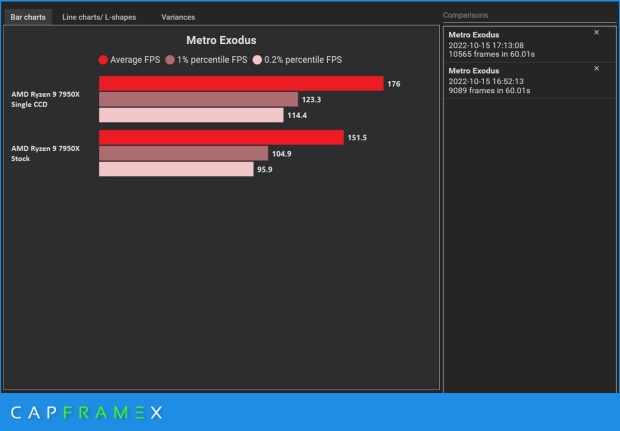According to TechPowerup the Ryzen 9 7950X 16-core processor exhibits some strange behavior with regards to the max boost frequency spread among its cores.
The cores located in CCD-1 boost to a higher frequency than the ones in CCD-2, with differences as high as 300 MHz. When CCD-2 is disabled on a machine running Windows 11 22H2, the processor actually puts out higher gaming performance, by as much as 10%. This is because the cores in CCD-2, with a lower maximum boost frequency no longer handle processing load from the game; and with CCD-2 disabled, CCD-1 has all of the processor's power budget—up to 230 W—to itself, giving it much higher boost residency across its 8 cores.
CapFrameX said that if the user goes into the BIOS settings and through the CPU Core Control settings and separates the central core into two sections they could work much magic. Disabling CCD-2 would allow the CCD-1 to use every part of the power provided to the CPU, offering a higher consumption of close to 230 W and improving performance by ten per cent, especially in gaming.




